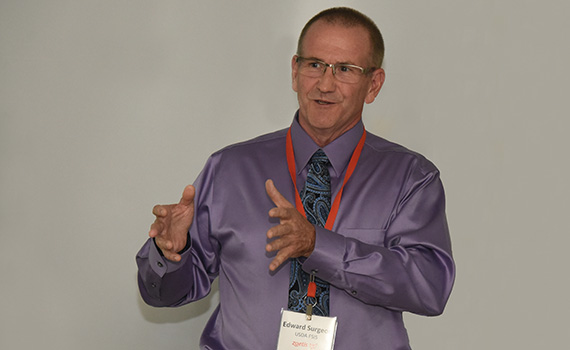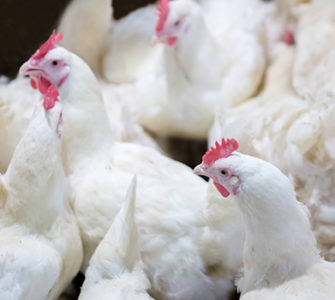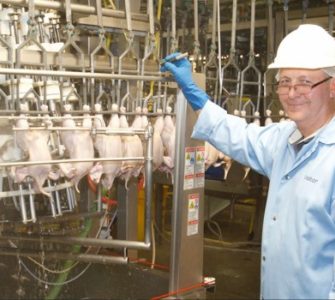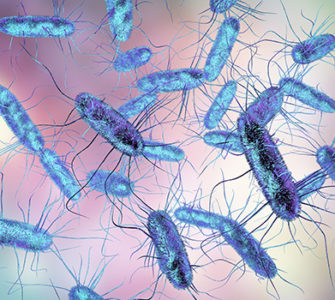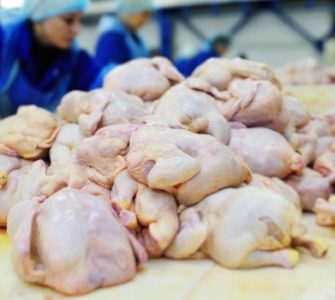Plant inspectors help poultry industry monitor welfare
Processors understand that the humane treatment of chickens during processing is simply the right thing to do. It also is the law.
“Under the Poultry Products Inspection Act (PPIA) and agency regulations, live poultry must be handled in a manner that is consistent with good commercial practices, which means they should be treated humanely,” said Edward Surgeon, DVM, of the USDA Food Safety and Inspection Service (FSIS).
In poultry operations, continued Surgeon, employing humane methods of handling and processing that are consistent with good commercial practices increases the likelihood of producing unadulterated product. “You will lose customers if you produce and ship an adulterated product. You’re not in business to do that, and we understand that.”
Defining terms
The starting point for enacting good commercial practices is an understanding of just what that term means. A notice in the Federal Register in 2005 reminded the industry of its requirements under the PPIA, and the National Chicken Council and other groups developed guidelines.
“Some of them are so comprehensive that they start from the hatchery and carry all the way into the plant,” Surgeon said, who spoke at a food-safety workshop at the 2016 Georgia Poultry Laboratory, Gainesville. The event was co-sponsored by USDA/FSIS and Zoetis.
The PPIA defines “adulterated” as any product produced in whole or in part from any poultry that has died from anything other than processing. Birds that fall into this category must be condemned. The term “mistreatment” is usually applied to a single incident, not overall systemic problems.
He said problems uncovered during verification are usually documented in a Memorandum of Interview. System problems, however, are written up on a noncompliance record.
Inspectors must document when establishments lose control of processes for handling birds, Surgeon added. Inspectors determine when they are not operating in accordance with good commercial practices and when there are repeated violations. An example would be intentional and repeated mistreatment by establishment personnel.
Comprehensive verification
A number of plant procedures are verified to determine compliance with good commercial practices and include:
- Handling practices throughout processing procedures
- Holding shed, including fans and misters in hot weather
- Truck unloading
- Loose birds in the yard
- Stunning
- Birds post-picking
- Review of established written animal-welfare program and records
Many questions need to be answered, he added. “In hot weather, do you have fans and misters on? Are the birds out of the sun? Are they protected? Are they comfortable? What’s your holding time in there? Are you doing first in, first out? Typically, these items should be documented in your program.”
Verification, Surgeon explained, touches upon every aspect of the operation including observation of the holding shed, truck unloading and cages. He looks for loose birds in the yard and observes how the animals are being handled.
Inspectors look at 500 birds at each position to extrapolate overall compliance.
“We’re [processing] 150,000 to 250,000 birds a day,” Surgeon said. “For me to look at 500 birds in one location, it’s not a big picture but it does give a snapshot of what’s going on.”
Finally, inspectors close the loop by comparing their observations with standards outlined in USDA/FSIS guidelines.
“I take what I’ve found and compare it to what your standards are,” he said. “But that’s as far as it goes. They are non-regulatory, and I’m just doing a comparison from my snapshot to what you say you’re seeing on a daily basis.”
The poultry processing industry can be proud that it has set high standards for the way it treats animals — and even prouder that it almost always meets its objectives.
“Are you doing what you say you’re doing?” Surgeon asked of the poultry processors. “Normally you are, which is great. Your programs are more in-depth than my certification visits, and they are also technically more involved.”
Posted on January 5, 2017



